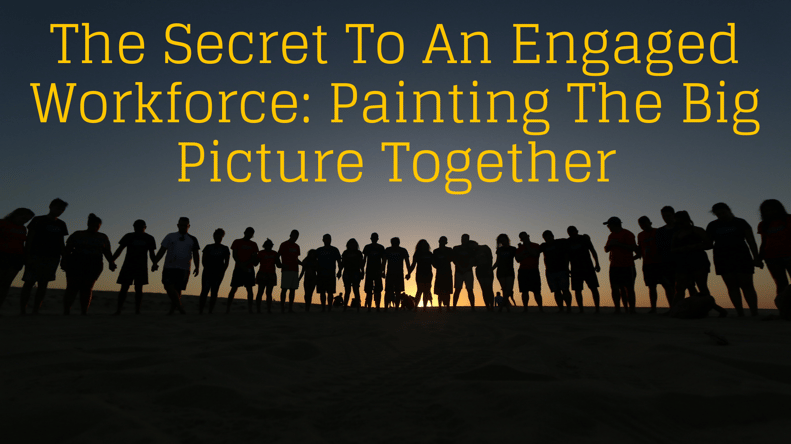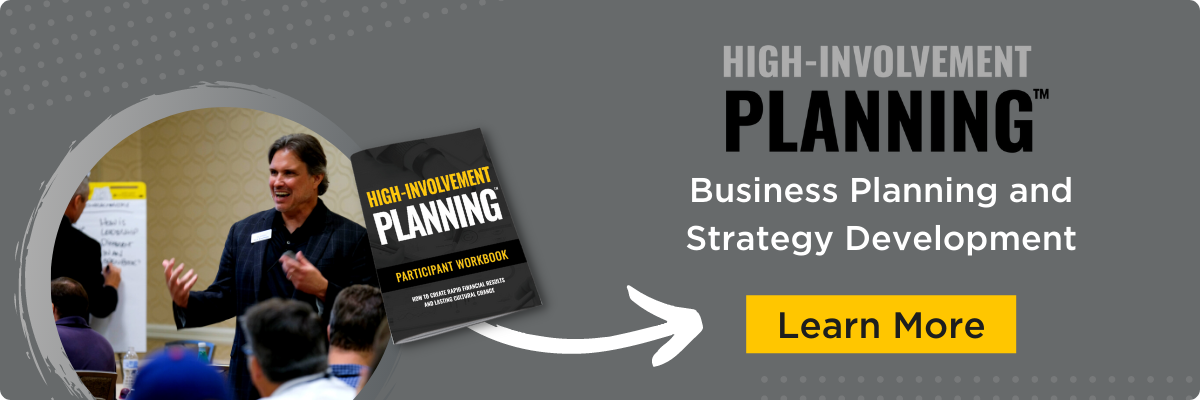
Deciding what your company wants to be when it grows up should be a team effort.
We continue to live in unprecedented times. Nothing seems predictable, and it's just about impossible to get anyone to agree to a consensus. Take inflation as an example. While plenty of economists continue to forecast that inflationary pressure is a temporary product of strong demand and snarled supply chains, others point to skyrocketing prices as evidence that an inflationary wrecking ball is already at work wreaking permanent economic damage.
Tracking issues like these regularly makes it easy to get lost in the day-to-day weeds.
But that's also why it's more important than ever to raise your sights and those of everyone in the organization higher—to aim at something bigger and more distant. To paint the Big Picture you're all striving for together.
The Roots of Disengagement
One of the big, if not the biggest, challenge every organization faces these days is retaining and recruiting people. The Big Quit or Big Resignation has left employers worldwide scratching their heads and wondering what they can do to make themselves what become known as an "employer of choice."
It's worth remembering that, before the pandemic struck, employers faced what now looks like an early symptom of this issue: a lack of engagement. One oft-cited Gallup study, for instance, found that some 14% of employees were actively disengaged in their work.
Should we be all that surprised that the pandemic might have given those disengaged workers an excuse to look for something better?
So, how can organizations tackle the issue of increasing engagement and productivity while also becoming a magnet for talent? One approach is to give people a voice in where the company is going—what you want it to be when it grows up.
The Wisdom of the Crowd
The notion that strategy and the future direction of an organization belong to the CEO and C-suite dates back to the top-down, hierarchical thinking of the Industrial Age. It's become common for the top of the organization to set the direction while everyone else just needs to "execute" by doing their job: nothing more, nothing less.
But this only reinforces the management myth that leaders and managers are the ones who hold all the answers. Worse, it leaves everyone else in the organization without a voice in setting the direction for the organization—especially when it's framed as a take-it-or-leave-it bargain.
And we wonder why so many people are choosing to leave their jobs?
As Jack Stack, CEO of SRC Holdings, writes in his book, The Great Game of Business:
Most of the problems we have in business today directly result from our failure to show people how they fit into the Big Picture. That failure undermines company after company... The Big Picture is all about motivation. It's giving people the reason for doing the job, the purpose of working.
That's why it's time to rethink how organizational strategy and direction are constructed. It's time to make it a team effort—to tap the Wisdom of the Crowd.
Painting The Big Picture Together
One of the key principles Stack outlines in The Great Game of Business is that when you embrace financial transparency inside your organization and teach your people what the numbers mean and how they impact them, you're creating a line of sight to the Big Picture of where the organization is headed. You can then create a game plan for how you can collectively reach your shared goals.
As Stack writes:
The planning process is a time to think about the future, to dream a little. It's also a time to think about what dangers may lie ahead so that you can figure out how to minimize them. And it's a time for everybody to say what they are willing to contribute-what commitments they will make to achieve the goals you all agree upon. If you can get people beyond the day-to-day issues, they'll blow by every obstacle if you can appeal to something they want to do.
As a leader or manager, it's not your job to solve every problem yourself. As you paint the plan for where the company is going, you need to get buy-in from everyone inside the organization for that plan to work. And you can do that by engaging everyone inside the organization in creating that plan.
It's an opportunity to ask your people questions like:
-
- What do they think they can accomplish in the coming year?
- What about five years out? What about ten years from now?
- How much can they increase sales and production?
- Do they want to?
- What concerns do they have about the company?
- Are there problems that should be fixed?
- Do they want more space?
- New tools?
- What additional perks or benefits might they need?
This is everybody's big chance to weigh in on the company's direction—to dream a little. And if they're disengaged or bored by the process, then you've already lost because there's little chance that they'll execute whatever plan you come up with.
As Stack writes:
You can only get consensus by opening up the planning process and bringing the entire workforce in. Set it up so people know they own the process, realize they are responsible for what comes out of it. That's the game. Otherwise, the plan will become a club, not a tool they can use in their work, and they'll regard the goals as yours, not theirs-which defeats the purpose of having them. It is tough to get anyone motivated to achieve someone else's goals.
The power of this kind of inclusive planning is so powerful because people get the opportunity to set their own goals and direction. They don't have to make sacrifices for the company's sake—they're making investments in their own careers. As Stack writes:
You can get them focusing beyond the company, on something more important to them than the company-namely, their own lives. They're protecting their jobs; they're achieving their dreams. They're not doing it for you. They're doing it for themselves.
A Call to Action
There's something magical that results when everyone works together to paint the Big Picture of where an organization is headed into the future. It might even be the secret ingredient to every company's challenge to keep employees engaged and, well, happy.
To learn more about what Jack Stack calls "High-involvement Planning," consider attending our upcoming workshop.
High-Involvement Planning (HIP) is a practical, leading-edge strategy development process that is market-driven.
Other articles you might like:
- The "Why" Behind High-Involvement Planning
- Engage the Front-Line Employee
- You Don't Have To Go It Alone
- Why Timing is Everything
.png)








.png)




-5.png)

